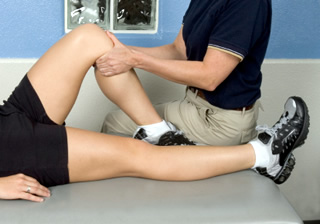
Physiotherapy helps to restore movement and function when someone is affected by injury, illness or disability

Physiotherapy helps to restore movement and function when someone is affected by injury, illness or disability
 Physiotherapy is a primary health care system that uses different treatments and techniques to restore movement in the body. It uses physical approaches to strengthen and restore physical, physiological and social well-being.
Physiotherapy is a primary health care system that uses different treatments and techniques to restore movement in the body. It uses physical approaches to strengthen and restore physical, physiological and social well-being.
Physiotherapy takes a ‘whole person’ approach to health and wellbeing and takes account of the patient’s general lifestyle. The Physiotherapist will treat the patient using manual therapy, movement and exercise and if appropriate, hydrotherapy – a form of physiotherapy carried out in water and other techniques such as heat, cold and acupuncture to ease pain.
All of our physiotherapists are registered with the Health Professions Council and Chartered Society of Physiotherapists and the Organisation of Chartered Physiotherapists in Private Practice so you know you’re in good hands.
See the details below to see the full range of physiotherapy treatment we provide – you’ll be amazed how many practices this covers.
We provide a comprehensive assessment so we can make a clinical diagnosis and select an appropriate treatment programme.